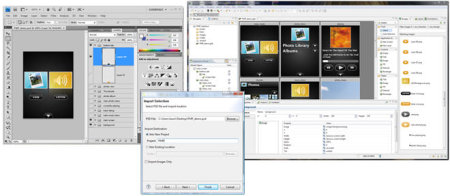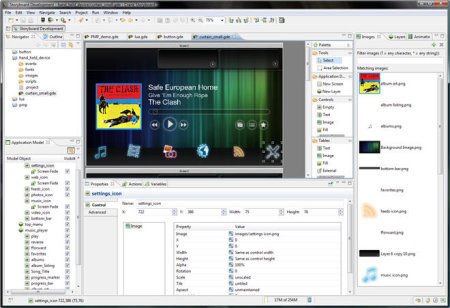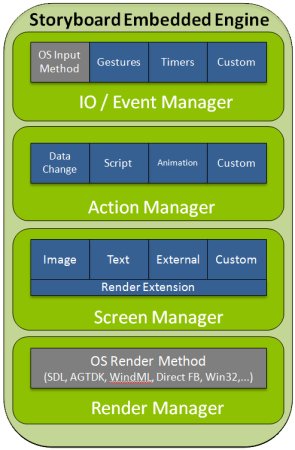GUI design app targets embedded devices
Dec 8, 2009 — by Eric Brown — from the LinuxDevices Archive — 31 viewsOttawa, Canada-based Crank Software is shipping a Linux-ready, cross-platform GUI development suite for embedded R&D designers. The Eclipse-based Crank Storyboard Suite includes an embedded GUI design and prototyping application called Crank Storyboard Designer and a runtime component called Crank Storyboard Embedded Engine, says the company.
The Crank Storyboard Suite is built on C, but its Eclipse-based GUI programming environment enables UI designers "with no programming experience to drag-and-drop their UI designs" into a working storyboard, says Crank. The team-oriented application suite lets designers work on their designs in parallel with, yet independently from, the engineers doing the C coding, says the company.
Crank Software itself uses the software to develop designs for consumer electronics, industrial devices, and automotive head units, but "the solutions are not limited to these industries," says the company.

Crank Storyboard Suite
(Click to enlarge)

Crank Storyboard Designer, showing direct import of PhotoShop images
(Click to enlarge)
Designed for rapid development, Designer supports parallel design, test, and development efforts, says the company. The application offers a scripting engine, and is said to support all popular graphics formats, as well as direct import from Adobe PhotoShop (see image above).

Crank Storyboard Designer
(Click to enlarge)

Crank Storyboard Embedded Engine architecture
- Animation support and screen transitions
- Custom gesture support
- Linux version supports graphic rendering in SDL, Frambuffer, and DirectFB.
- Small footprint minimizes impact on performance
- Utilizes hardware acceleration where available
- Plugin architecture allows for scalability
- Clean communication API allows for easy integration into systems
- Testing and regression hooks built in
- WebKit integration
Stated Graham Spencer, project manager, Paradigm Advanced Research Centre (PARC), "The Crank Storyboard Suite enabled us to quickly prototype and simulate our user interface while providing consistent results across hardware platforms and operating systems."
Stated Jason Clarke, VP of Sales and Marketing, Crank Software Inc., "Today, UI designers use one development tool and the embedded systems engineers use another. The linear, back-and-forth approach often means R&D teams miss their market window."
Availability
The Crank Storyboard Suite Storyboard is available immediately, and evaluation versions are also available, says Crank Software. More information may be found here.
This article was originally published on LinuxDevices.com and has been donated to the open source community by QuinStreet Inc. Please visit LinuxToday.com for up-to-date news and articles about Linux and open source.